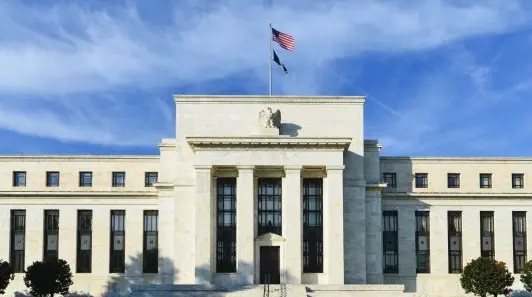USD: Benign global conditions keep the dollar soft
The dollar has started the week on the softish side. This may partly involve some pre-positioning ahead of tomorrow night's Fed rate cut. But it will also be a function of the benign external environment. Here, global equity markets continue to edge higher on a cocktail of resilient business optimism and the prospect of lower core borrowing costs. News of the continuing detente in US-China relations is also helping here, as Presidents Trump and Xi appear set to talk on Friday and seal the deal regarding TikTok's future status in the US. Chinese asset markets remain supported, and USD/CNH is drifting towards the year's lows again.
Over the summer, we have been writing about the success of the carry trade. One of the most popular carry trade currencies has been the Turkish lira. Even here, investors were rewarded with the news yesterday that a crucial court case – potentially to remove a key opposition party leader from his position – has been adjourned until 24 October. Carry traders normally expect the pick up in high interest rates to offset nominal lira depreciation, but received the bonus of lira appreciation yesterday.
Elsewhere, even the stubbornly bid USD/JPY is drifting lower today. This may be because the more moderate Shinjiro Koizumi is entering the LDP leadership race against Sanae Takaichi, who is seen as yen bearish for her views on loose monetary and fiscal policy. We do favour USD/JPY to 145 over the coming weeks, but it looks set to be a bumpy ride.
And returning to the US, news that the Fed's Lisa Cook will be able to vote at tomorrow's FOMC meeting after winning an appeals court case hasn't meant much to markets. A 25bp rate cut remains firmly priced.
For today, the focus will be on US August retail sales. The control group in this figure is expected to have risen by 0.4% MoM from 0.5%, suggesting the US consumer is doing ok. Today’s release of import price data will be closely examined to determine who is absorbing the cost of tariffs. Are exporters to the US reducing their prices, or are US businesses either absorbing the costs through margins or passing them on to consumers? Our team feels that the tariff cost will ultimately be passed on.
DXY is drifting towards 97.10 support in quiet markets.
For all our latest views on global FX markets, please see our September edition of FX Talking. And join us for a webinar this Thursday (18 September) at 1400 BST/1500 CEST/0900 ET for a post-Fed assessment of FX markets.
EUR: Living with French political instability
As our colleagues discuss in their review of the French budget impasse, the path ahead looks highly uncertain. However, sovereign upgrades for Spain and Portugal are offsetting the French news, and the global glass-half-full environment is keeping the euro bid. EUR/USD is pretty close to resistance at 1.1800/1830 now. The most likely trigger for a breakout would be tomorrow night's Fed – but let's see if it happens earlier.
In the eurozone today, we'll receive updates on the ZEW investor sentiment surveys. These might nudge higher on the back of the positive equity environment seen this summer, but look unlikely to be a market mover. But rate spreads remain EUR/USD supportive as the market increasingly concludes that the ECB is done cutting at 2.00%, while the Fed has another 125-150bp of easing to deliver.
GBP: Jobs data won't dent hawkish BoE
We've just seen the release of UK jobs data for August. Unlike in the US, where the 'solid' labour market crumbled this summer, payrolled job losses were only a modest 8k in August. And there were no surprises in the earnings data, which remains at 4.7/4.8% YoY.
As our UK economist, James Smith, notes, "Today's data doesn't change a huge amount for the BoE. Many economists were surprised by how little emphasis the Bank seemed to put on the cooler jobs market in its August meeting. So barring a surprise spike in job losses, today's data was never likely to move the needle too much. We get inflation data tomorrow, where services inflation is likely to dip (though perhaps not quite as much as consensus expects). We're still narrowly favouring a November rate cut but a surprise spike in inflation tomorrow (one that's not driven by volatile categories) would probably change our mind on that."
GBP/USD is edging higher today on the presumption that the BoE can hold its hawkish position for longer. And barring a big downside shock to tomorrow's August CPI data, we think Thursday's BoE event risk could be sterling positive too. We've got a year-end target for GBP/USD at 1.38, which could be met a little sooner.
CEE: More inflation numbers to understand the reaction function
Yesterday's inflation figures in Poland brought a slight revision for August from 2.8% to 2.9% YoY, but indicate weaker core inflation at 3.1%, which will be published today. Although September and October should not bring major changes in the headline path, we expect inflation to return to the central bank's 2.5% target later. In the short term, the National Bank of Poland will remain hawkish, and we expect only one more cut in November this year, but the cycle should continue next year with two more 25bp rate cuts and a 3.75% terminal rate in 2027. In the Czech Republic, PPI for August will be released today, where the central bank also monitors the breakdown in agricultural and construction producer prices to check the pulse on CPI.
Yesterday's markets did not see much negative impact from the French downgrade, and CEE currencies continue to enjoy investors' favour. EUR/HUF broke through the key level of 390, and the central bank's hawkish communication is visibly keeping this trade alive even after the end of summer. Although we can see increased sensitivity to potential global shocks here, for now it seems that the long HUF trade still has potential to go further. On the other hand, the rest of CEE has tried in vain to maintain some of yesterday's gains and is rather waiting for further local impulses and Wednesday's Fed decision.
















































































